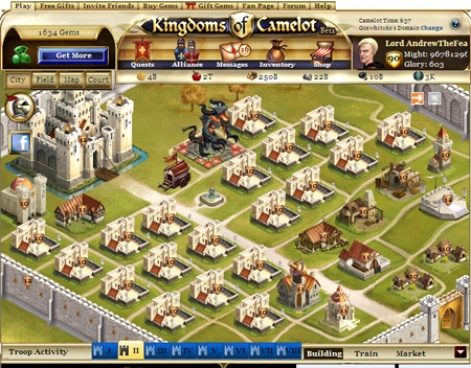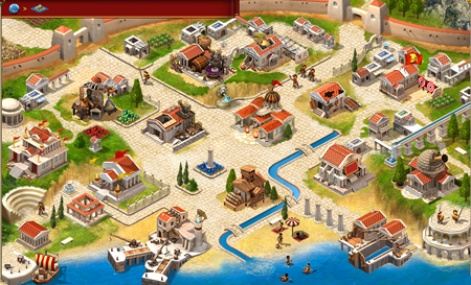We've now been running our Mobile Mavens panel for a number of years.
It's a group of industry experts who discuss the hot topics of the mobile games industry on a weekly basis.
But how about going really deep into one of the key and ongoing subjects faced by all free-to-play game designers and operators - monetisation?
It is about the money
So, with that thought in mind, I've added another string to our regular Monetizer column, with the formation of the Monetizer Mavens.
We'll be regularly discussing the trends occuring at the interaction of delighting players and generating cash.
And we're also looking for new members, so if you'd like to be considered, please drop jon [at] pocketgamer.co [dot] uk an email explaining your credentials.
As for our first topic of debate, we asked:
Traditionally, F2P mobile games had a single hard currency and a single soft currency. Now, however, we're seeing a proliferation of different types of currencies and resources, especially those based around progression and, to a lesser extent, social gifting.
So, why is this trend happening? Is it a good thing for consumers, or just another way to confuse them? Is it increasing churn? Are the days of a simple single hard currency over for good?
Additional currencies allow a game to reward desired behavior in a more controlled manner than by giving out hard currency. Thus, players benefit because there’s just more stuff they can earn (and be it by spending hard currency to earn a second hard currency) and there is less potential imbalance by abuse (e.g. people who have no scruples to spam their Facebook friends to earn energy for sped-up progress).
Game makers benefit through the player’s controlled actions – this could be higher PvP engagement as a result of a currency that is earned with each PvP fight. Also, slightly more complex in-game economies add opportunities to create high monetization pressure.
The downside is that conditioning people with an artificially valuable reward to use a mechanic instead of making the mechanic fun and useful, is a slippery slope. I would call wrong, when the most loyal users feel forced to watch video ads to earn unique speed-up coins to have the maximum competitive edge.

F2P mobile games have, over the course of the last few years, unveiled more and more efficient ways to monetize, and naturally, we’ve seen a lot of focus on promoting the spending of that single implemented hard currency.
Multiple soft currencies provide more control and create (an illusion of) interesting choices.Mikkel Hansen
This has meant less focus on the soft currency, creating very fluctuating value and in some examples, undermined the traditional ‘play’, through which the soft currency is acquired. By trying to implement additional ways to afford the use of the hard currency, the game loses control of the soft currency, making it hard to balance.
Multiple soft currencies, or even hard, provide the game with more control of the value of the currencies, and creates (an illusion of) interesting choices for the player. Furthermore, as Justin says, abuse is minimized, even if a player-to-player economy should be introduced. Everyone wins.
The drawback is that some it might spawn some confusion is first-time players, especially with the more complex games. This could potentially create spikes in the churn, just around the time another currency is introduced, or at the very beginning.
The traditional one soft, one hard [currency], might be resting for a while, but it will find its way back as soon as F2P mobile games have stabilized in its affordance and balance between its currencies.

Ben is a 15-year veteran of the games industry - he's worked as a senior executive, studio head, project lead, creative director and game designer at companies like DeNA, EA, Sony and Lionhead.
He started working on traditional games, but has been focussed on the free-to-play business model since 2006 - an extremely long time by western standards. During that time He's worked on a total of ten separate free-to-play games across five different platforms reaching over 50 million users.
As stated, the more currencies/consumables you have - the more simultaneous economic control you have. You can throttle the availability of each to drive a specific player behavior (event engagement, retention, buying hard currency, viral activity).
This of course needs to be balanced with accessibility as there is a danger players can be overwhelmed by too many icons and numbers early on (depending on the target audience).
One thing I have noticed over the years is many players don't even notice a currency or consumable exists before they don't have enough of it to keep playing.

With over 15 years’ data mining experience, Mark co-founded deltaDNA, formerly GamesAnalytics, to unlock big data to drive player understanding, introducing the concept of Player Relationship Management to build better games.
In my opinion, this trend is happening as we see more complex games hitting the app store (aimed at the core gamer) and more casual mobile players evolving.
These players now have a better understanding of multiple currency structures, previously experienced in games like Dragon City, FarmVille and Clash of Clans, which are now household names.
Although I don’t see single hard/soft currency games becoming ‘over for good’, multiple currencies are best suited to resource management games where resources add to the overall gameplay and in turn give developers deeper control of the in-game economy.
However, no matter the type of game or number of currencies, it is very important that the structure is easy to understand, intuitive and adds to the game experience.
I’m late to the party and as such I don’t have much to add that hasn’t already been expressed by the others... As they said, multiple currencies are mainly a way to control the economy, manage access to resources and drive player behavior.
Is this confusing for players? I don’t think so, if the currencies are introduced gradually and clearly: a lot of games are actually adding currencies post-launch, therefore targeting more expert players that shouldn’t have a problem grasping how to use them, and those that have multiple currencies at launch should make sure to properly tutorialize their usage, and introduce them gradually to the player.
That said, there isn’t a one-size fits all solution: there are still successful games (e.g. Bejeweled Blitz) using a single currency, and Candy Crush Saga has demonstrated that direct real money purchases can be very effective too.

First, I don't think that a proliferation of currencies or currencies based around social interaction are a new thing for F2P mobile games or F2P games in general. For example, Kingdoms of Camelot: Battle for the North features multiple soft currencies (food, wood, stone, ore, gold) combined with a hard currency (gems).
The Sims Freeplay features a soft currency (Simoleons), a hard currency (Life Points) and a social currency that rewards the player for interactions with others (Social Points). Both games are over two years old.

However, I do think the question hits on an area of monetization design that has been bothering me lately, which is poorly designed game economies.
Multiple currencies can enhance the player experience or detract from it depending upon the implementation. A good use of multiple currencies can make a game more interesting whereas a poorly designed use of multiple currencies can increase player confusion, and by extension, churn.
It's no secret that in the mobile market there is a lot of me-too design, not only on the game level but on the feature level. Developers copy features from games that copied them from other games that copied them from other games; each developer assuming that the specific feature or implementation was successful inside the original game's economy, or will translate to success when inserted into a different genre, etc.
When lecturing on F2P design I espouse 'player first' thinking. In my opinion, a well designed currency is one that creates interesting gameplay interactions or decisions for the player. For instance, going back many years to the browser-based F2P game Ikariam, this familiar city building and territory conquest style game featured six soft currencies (wood, gold, marble, wine, crystal and sulphur).

When the player begins Ikariam, he owns an island that produces gold, wood and one of the other four soft currencies. As the player progresses he must use trade, empire expansion and conquest in order to access the other resources he needs to continue upgrading his cities and armies. This implementation is one that uses a multi resource economy to create interesting decisions for the player.
A poor implementation of a game economy is one which uses multiple currencies (often to the point where secondary soft currencies are hidden from the main UI) but these different resources are entirely undifferentiated. They create no interesting or unique gameplay, and exist solely to add more treadmill to the player progression.
This is the sort of implementation that leads to scenario Ben mentions where a player does not even notice a currency exists until he runs out of it and is prompted to buy more. I believe this is commonly a side effect of me-too game design, and is an indicator of a developer who prioritizes profit & loss over the player experience whether intentionally or through carelessness.
As for future trends, I do not see any clear dominant pattern emerging. We will continue to see expertly designed economies, churn inducing economies and everything in between in the coming months of mobile F2P games.

I will agree with Ethan in multiple currencies in F2P games is not a new thing. Far from it. Although I still believe we're seeing a recent tendency towards multiple currencies, in games targeting the majority of the casual players - 'the mainstreamers' if you will.
Kingdoms of Camelot: Battle for the North falls out of that category, in my opinion. Kingdoms of Camelot, through its complexity, is to a much greater extent targeted at core gamers, is a great example of what Ben mentions about overwhelming the player, with too many icons, and too many currencies.
In regards to The Sims Freeplay, the third currency, the social points, were only introduced in the Neighbor Update mid-summer 2013, so one might still argue that this is fairly new, for a more 'mainstream' game.

I'm late in this conversation but here are my two cents.
First of all it depends on what we consider a soft currency. Personally I see items as a soft currency of a sort and they have been ruling game economies ever since games like FrontierVille and Zombie Lane.
Energy economies just don't work on mobile and we need ways to slow down players' progress.Michail Katkoff
But item economies weren't as strong on web as they are now on mobile because back in those days, we were all building primarily energy-based economies. Items were, in a way, just a secondary way to slow down player progress and increase vitality.
The reason for the increase in the importance of these secondary currencies on mobile is because energy economies just don't work on mobile and we need ways to slow down players' progress.
Another simple reason why we use multiple currencies is ever present inflation. Clash of Clans hit the jackpot with introduction of dark elixir and Boom Beach follows the route by doubling the amount of currencies compared to Clash of Clans.
So is this good for consumers? That's a silly question. I personally strive to make entertaining games. The economy I choose to build derives from the core loop and aims to slow down players' progress just enough to keep them entertained and keep my team out of the treadmill of content creation.
























